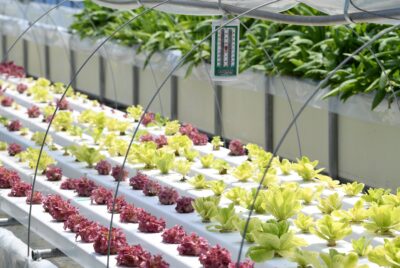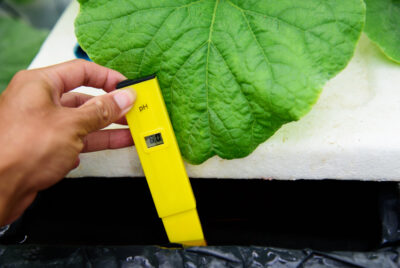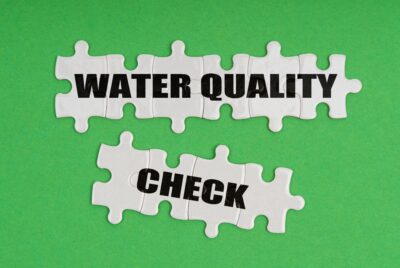Hydroponic Microgreens
We may earn a commision from purchases made using our links. Please see our disclosure to learn more.
Hydroponic Microgreens: A Journey Through Soil-less Wonders.
Introduction
Hey there fellow enthusiasts! First and foremost, have you ever stumbled upon the concept of Hydroponic Microgreens? These tiny plants not only look attractive but also pack a punch both in flavor and nutrition. In today’s world, they’re fast becoming the crown jewel of chefs and health experts alike.
Benefits of Hydroponic Growth
So, what’s the big deal, you might wonder? Well, growing hydroponically is primarily about speed, health, and optimizing your available space. The fascinating part is the absence of soil ensures that the growth rate is significantly faster. Plus, in contrast to traditional methods, it guarantees a certain purity to your plants, shielding them from soil-borne diseases. And for city dwellers like me, space efficiency is a sheer dream come true.
Diving Deeper into the Hydroponic System
Now, I bet some of you are thinking, what’s the underlying science here?” To put it simply, hydroponics is about nurturing plants without soil, instead using mineral nutrient solutions in water. Surprisingly, it’s as organic as nature intended, even if it sounds futuristic.
Why Opt for Hydroponics Over Traditional Farming?
Indeed, there’s undeniable allure in growing plants in soil. But if you’re keen on conserving space, time, and resources, then hydroponics should be on your radar. Moreover, as urban spaces get cramped and soil quality wanes, hydroponics might just be the forward-thinking approach we need.
Steps to Start Your Hydroponic Microgreens System
Before anything else, a bit of planning can save you tons of headaches later. Choosing the right system can make all the difference. Using specific hydroponic instruments and controllers can help. Got pristine water? If not, it’s high time to delve into filtering or sourcing top-grade water. Moreover, light and temperature are pivotal, so those should be high on your checklist.
Hydroponic Systems: Types and Choices
Interestingly, there isn’t just one method for hydroponics. Several systems are at your disposal:
- Wick System: The simplest form of hydroponic gardening. No moving parts, just a wick connecting your plant to the nutrient solution.
- Deep Water Culture: Your plants literally float on top of the nutrient solution. It’s fascinating, efficient, and highly productive.
- Nutrient Film Technique: Here, a thin film of nutrient solution is passed over the roots. It’s advanced, but the results? Outstanding!
- Aeroponics: A bit of a challenge, but it involves misting the root system with the nutrient solution.
- Drip Systems: Think of it as a mini-irrigation system. It’s controlled, and efficient, and ensures each plant gets its fair share.
The Magic Potion: Hydroponic Fertilizer
For every aspiring hydroponic gardener, understanding nutrient solutions is pivotal. Since the soil is out of the equation, you’re essentially feeding your plants directly. The solution is a cocktail of essential minerals and nutrients, and ensuring the right balance is crucial.
Top 10 Microgreens to Grow Hydroponically
From personal experience and a bit of obsession, here’s my list of the top 10 microgreens you absolutely must try:
- Radish: It’s spicy and grows super quickly!
- Arugula: That peppery kick is unbeatable.
- Mustard Greens: Add some zest to your salads.
- Basil: Aromatic and a fantastic addition to dishes.
- Sunflower: Nutty and packed with nutrients.
- Pea Shoots: Sweet and crunchy – perfect in stir-fries!
- Swiss Chard: Add some color and vibrancy to your plate.
- Beet Greens: Rich in color and equally rich in flavor.
- Cilantro: A divisive herb, but an essential for many dishes.
- Kale: Last but not least, the superfood king!
Hydroponic Multigreens and Sustainability
Amidst all the technicalities, there’s a pressing concern: the environmental footprint. After all, in today’s age, sustainability can’t be an afterthought. Fortunately, hydroponics is pretty eco-friendly. For one, it’s way more water-efficient than traditional farming. And since it’s typically an indoor venture, pesticides or herbicides become obsolete.
The Community Aspect to Hydroponic Multigreens
Beyond just cultivation, microgreen farming is about connections. Over the years, I’ve crossed paths with numerous enthusiasts, each bringing a fresh perspective. Exchanging insights, swapping seeds, and reveling in collective harvests bring unparalleled joy to this journey. If you ask me, diving in will connect you with a vibrant community.
Conclusion
In wrapping this up, hydroponic microgreen cultivation isn’t a mere pastime; it’s an embodiment of passion, a nod to sustainable practices, and a testament to the beauty of growth. And with every sprout, there’s a promise of a greener tomorrow.
FAQs
Are hydroponic microgreens safe to eat without washing?
Generally, they are cleaner, but washing is always a wise step.
How long do microgreens take to grow?
Typically between 7 to 21 days, depending on the variety.
Do I need special lights for hydroponic systems?
While natural light works best, LED grow lights are a great alternative.
Can I reuse the water in my hydroponic system for microgreens?
It’s best to refresh the water to ensure optimal nutrient levels and avoid contamination.
Why are my microgreens yellowing?
This could be due to insufficient light or a lack of necessary nutrients.





Comments are closed.